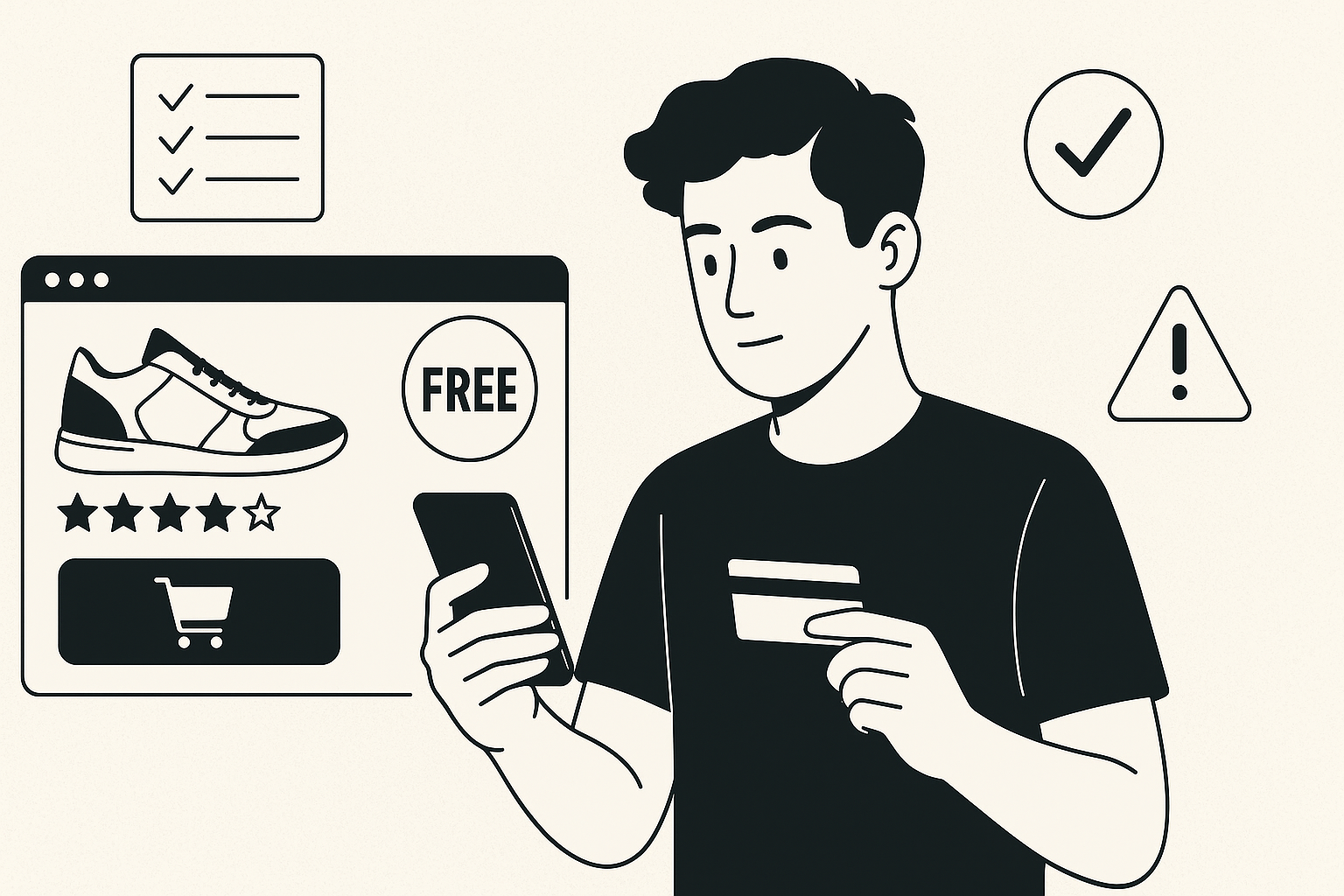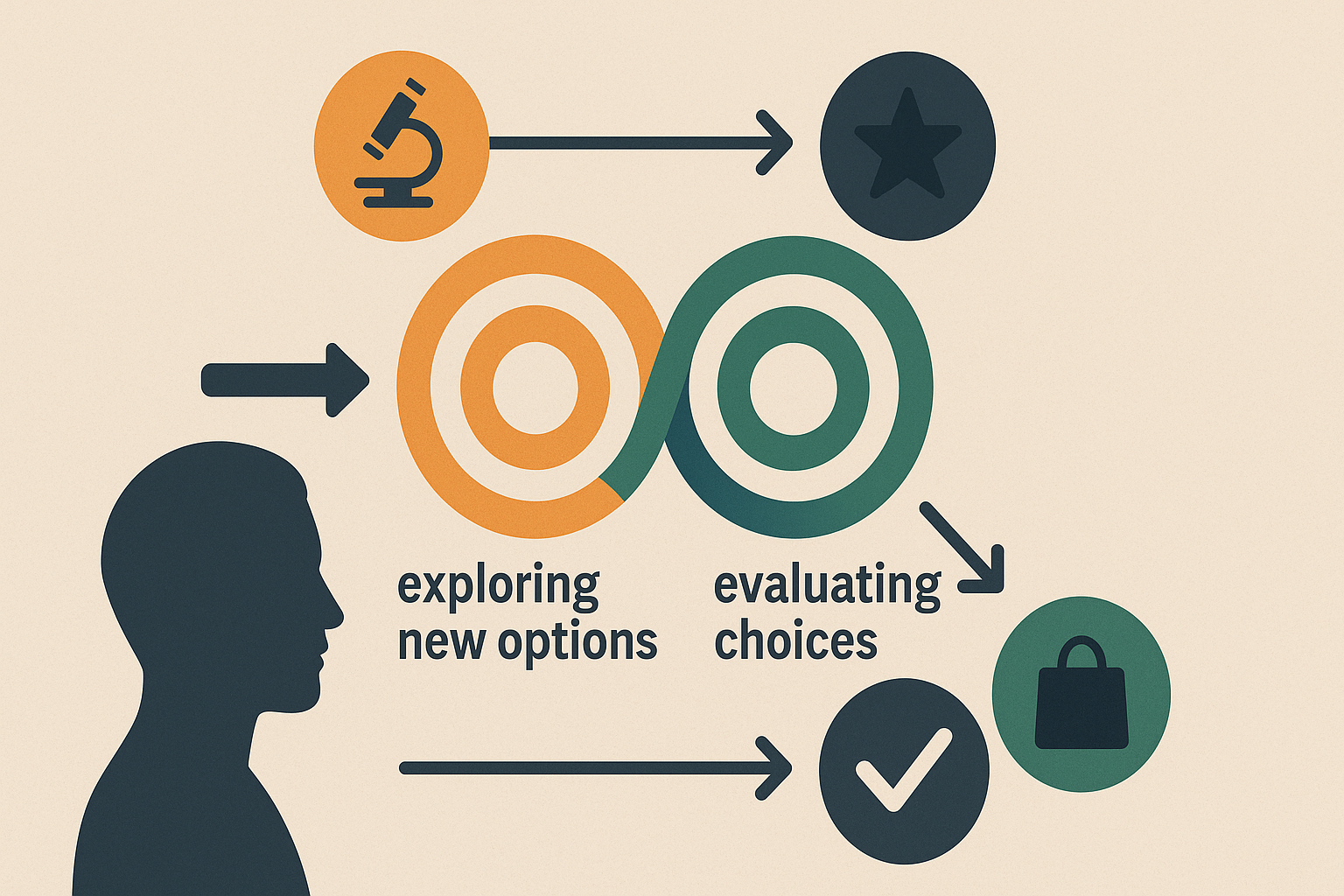Inside The Messy Middle
Messy MiddleHere's all you need to know about Messy Middle and its effect on the customer buying process.

The Hidden Battlefield Where E-Commerce Brands Win or Disappear
Why do so many great e-commerce brands vanish even after doing everything “right”? Because the real battle isn’t at the checkout. It’s in the messy middle.
What Exactly is the Messy Middle?
The “messy middle” is the tangled space between trigger and purchase where consumers oscillate between exploring and evaluating. They are bombarded with choices, distracted by alternatives, and swayed by subtle cues. In Google’s landmark study Decoding Decisions: The Messy Middle of Purchase Behaviour, marketers were urged to rethink the decision journey not as a funnel but as a zone of constant motion. (Google, 2020).
The Two Spirals: Explore vs. Evaluate
After a purchase trigger (a need, a desire, a recommendation), your shopper doesn’t march forward. They loop between two states:
- Explore — they broaden the options: “What brands exist?”, “What styles are there?”, “What are new trends?”
- Evaluate — they narrow down: “Which brand is best?”, “What do reviews say?”, “Who offers discounts or free shipping?”
These loops repeat until friction or a convincing signal stops the loop. (Google’s research confirmed these loops, naming them “explore” and “evaluate” as the core spins in the messy middle.)
Now what's the best solution to this? catch them in both modes
Why Do People Change Their Minds During a Buying Process?

Because the brain looks for shortcuts when it’s overwhelmed. When faced with too many options, people don’t analyze every detail; they rely on simple mental triggers that make decisions easier and faster.

For instance:
- Social proof - makes us trust what others already like. Hundreds of good reviews? It must be safe.
- Scarcity- (“Only 2 left!”) creates urgency and pushes us to act.
- Authority - expert approval or media mentions signals credibility.
- The power of free - (free shipping, free returns) makes something feel like a better deal.
- Simple rules - like “4.5 stars = good” or “Top brand = reliable” guide quick decisions.
So when buyers change their minds mid-purchase, it’s usually not about logic. It’s these subtle mental nudges that make one option feel right over another.
What This Means for Your E-Commerce Store
If your marketing stops at getting attention, you’re missing the part of the journey where most decisions actually happen in the messy middle. Here’s how to make sure your brand stays visible and trusted when customers are exploring and evaluating:
1. Show up for every kind of search: Don't only target people who are ready to buy right now. Many customers are still researching, digging for ideas, comparisons, or the “best” options in your category. If someone types “best eco sneakers UK,” your brand should appear. If they’re comparing “Brand X vs Brand Y,” make sure you’re part of that conversation.
2. Help customers move naturally from exploring to buying: Your content should guide people step-by-step. Start with an article that inspires them (“10 Best Eco-Friendly Sneakers for 2025”), then lead them to a comparison page, and finally to your product page. Each stage should make the next decision easier.
3. Build trust at every point: When people are deciding, they need reassurance. Make it easy for them to trust you by showing:
- Clear star ratings and honest reviews
- “As seen in” or “Featured on” logos
- Simple comparison tables that highlight what makes you different
- Transparent return, delivery, and warranty information: These small things make shoppers feel safe enough to hit “buy.”
4. Make buying effortless: Every delay or hidden cost can make people back out. Slow websites, surprise shipping fees, or complicated checkouts all create friction. Keep things fast, clear, and simple, show delivery costs upfront, streamline checkout, and make sure your site loads quickly on mobile.
5. Use behavioral triggers the right way: Psychological nudges can work but only when used honestly. A small “Only 2 left” notice can drive urgency. Expert endorsements can add credibility. Free shipping or easy returns reduce hesitation. Test these triggers carefully and use them to build trust, not manipulate it.
Metrics You Need to Know (Beyond the Funnel)

Don’t just look at “Add to Cart → Checkout”. In the messy middle, your real battle happens earlier. Track:
- Impression share on “ideas” + “best” queries
- Content engagement on exploratory pages
- Click-throughs from review/comparison pages
- Drop-off points in evaluation loops
- Micro-conversions like “read reviews,” “compare,” “add to Wishlist”
These signals reveal where your brand is invisible, boring, or distrusted.
Conclusion: Don’t Let the Middle Be a Black Hole
The messy middle is messy for a reason. It’s easy to underestimate. But for e-commerce brands that understand it who make themselves visible, trustworthy, fast, and helpful in that space the payoff is huge. That’s where brand and performance must merge. That’s where your biggest sales are waiting.
Next up: a tactical playbook on how to map your content, pages, ads and UX to the messy middle so your store no longer fades into scroll oblivion.


Comments